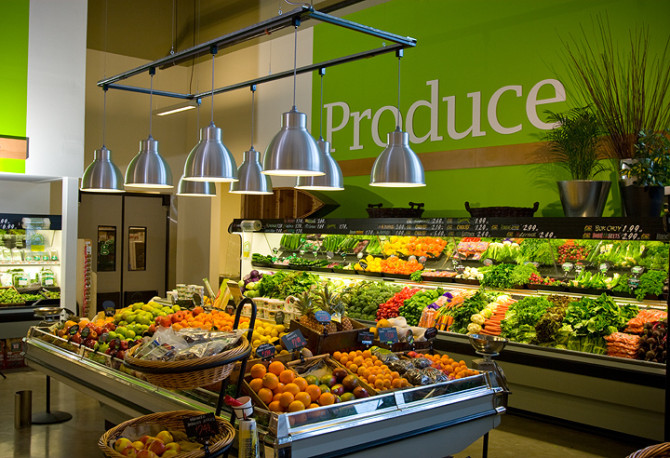
Our planet’s cry for rescue becomes clearer each day. As environmental concerns take center stage, it’s essential to recognize that even seemingly small actions contribute to a larger narrative. Indeed, minimizing your carbon footprint during a move is one such action, often overlooked but significant.
Contents
The Green Transition in Everyday Habits
Now more than ever, it’s vital to ingrain eco-friendly habits into our daily routines. These practices not only cater to Earth’s well-being but also cater to our health and finances. From recycling to upgrading to energy-efficient appliances, we can do plenty of things to contribute to our planet’s health.

Consider the moving process, too. Usually, it’s an overwhelming endeavor accompanied by mounds of waste. But what if we could rewrite this narrative? By adopting sustainable practices during relocation, we’re not just decluttering our lives but also championing a sustainable future. So, let’s explore eight tips for minimizing your carbon footprint during a move.
1 Early Bird’s Green Advantages
Embarking on an eco-friendly move begins with meticulous preparation. Dedicating time to research eco-friendly tips and strategies can illuminate the vast possibilities available for an environmentally conscious relocation. A proactive mindset can pinpoint eco-friendly moving companies, sustainable packing materials, and energy-efficient transportation options.
Furthermore, by plotting your move in advance, you can tap into community resources, like local groups or online forums, to share and exchange packing materials, thus cutting down on waste and expenses. You’ll have plenty of time to work on setting a realistic budget and finding more eco-friendly and cost-effective ways.
2 Mindful Decluttering
As you stand on the threshold of a new chapter, it’s an opportune moment to declutter your belongings and mindset. Over time, our living spaces become storehouses of items, some invaluable, others mere space-fillers. Therefore, before delving into packing, dedicate time to scrutinize what you truly wish to accompany you forward.
You might stumble upon forgotten treasures or items that no longer resonate with your present needs. Host a yard sale, list them online, or donate to community organizations. Each item you repurpose or rehome lightens your move and stands as a testament to sustainable living. This process of mindful decluttering ensures a lighter, purposeful move while promoting the ethos of waste reduction and reuse.
3 Think Beyond Traditional Packing
In the realm of relocation, traditional cardboard boxes have been the hallmark of packing. But with the spotlight on sustainability, it’s time to think outside the (cardboard) box. Pioneering companies like City Movers lead the charge, emphasizing sustainable and innovative packing alternatives. Instead of disposable wrapping materials, envision repurposing household textiles. Soft blankets can wrap delicate items, while scarves and towels are excellent padding for fragile belongings.
Also, consider sourcing sturdy second-hand boxes from local businesses or even renting reusable crates, which can be returned post-move, reducing waste. Some communities even have platforms where residents share or trade packing supplies. Exploring these avenues ensures a reduced environmental impact and offers potential savings. By pushing the boundaries of traditional packing methods and embracing more eco-friendly alternatives, you’re making a tangible difference in both the moving process and the broader environmental landscape.
4 Embrace the Three Rs: Reduce, Reuse, Recycle
The foundational eco-principles of reduce, reuse, and recycle can seamlessly integrate into your moving process. Begin by reducing waste, using existing containers like pots, suitcases, and even dresser drawers to transport items.

Caption: By reducing, reusing, and recycling, you’re not only decluttering but also minimizing your carbon footprint during a move.
Alt-tag: A person sorting trash for recycling as one of the examples of ways to minimize your carbon footprint during a move.
Once relocated, any disposable packing materials, if unavoidable, should be either reused for future needs or directed to appropriate recycling channels. Remember, each reused box or recycled bubble wrap is a step toward a cleaner planet.
5 Opt for Green Wheels
When minimizing your carbon footprint during a move, the mode of transportation you choose plays a pivotal role. The journey from your old home to your new one can generate a notable amount of emissions. To counteract this, look for moving companies committed to green practices.
Some utilize vehicles powered by bio-diesel or offer carbon offset programs. Others maintain their fleets diligently to ensure optimal fuel efficiency, reducing the carbon emissions per trip. If you’re spearheading your relocation, consider getting your vehicle serviced for better mileage or even renting a hybrid or electric truck. Always keep in mind that every sustainable choice in transport substantially amplifies the eco-friendliness of your move.
6 Green Cleaning Before Settling In
Cleaning is inevitable before moving into your new space or leaving your old one. Instead of reaching for chemical-laden products, consider whipping up eco-friendly cleaning solutions at home using ingredients like vinegar, baking soda, and lemon. Not only are these mixtures effective, but they also lack the harmful toxins in conventional cleaners, making them safer for the environment and your family.
As you embark on this green cleaning journey, take it as a great opportunity to teach your kids about caring for the environment. Teach them about the benefits of using natural products. Observing and understanding these sustainable practices makes them more likely to adopt them as they grow. Remember, kids learn from our actions. Making eco-friendly choices in every aspect of moving, including cleaning, significantly reduces your overall environmental impact.
7 Unpack with Environmental Precision
Arriving at your new abode is just the beginning. As you unpack, approach the task methodically, prioritizing essential items first. Seek to establish eco-friendly systems in your new home, such as energy-efficient lighting or waste segregation routines. So, try to be more eco-friendly in all setup decisions. This minimizes immediate waste and sets a green precedent for your life in this fresh setting.
8 Responsible Relocation Remnants
Every move, no matter how meticulous, leaves behind remnants. While these traces could be considered the inevitable fallout of relocation, it’s essential to approach them with an eco-conscious lens. From leftover bubble wrap to discarded electronics, each item demands responsible handling. Biodegradable waste can find a new life through composting, transforming into rich nutrients for gardens.

Simultaneously, it’s imperative to ensure that electronics are channeled to e-waste facilities, preventing harmful substances from seeping into our environment. By tending to these remnants with care and commitment, you’re concluding your move on a high note and championing a sustainable ethos beyond mere relocation.
Charting a Sustainable Path Forward
The relocation journey offers a unique intersection of personal progress and planetary consideration. By focusing on minimizing your carbon footprint during a move, you align with environmentally responsible practices and pave the way for others to follow. The steps might seem minor, but collectively, they can ignite significant change. Embrace the challenge, be the torchbearer for green moving, and contribute to a harmonious balance between human aspirations and Earth’s well-being.



